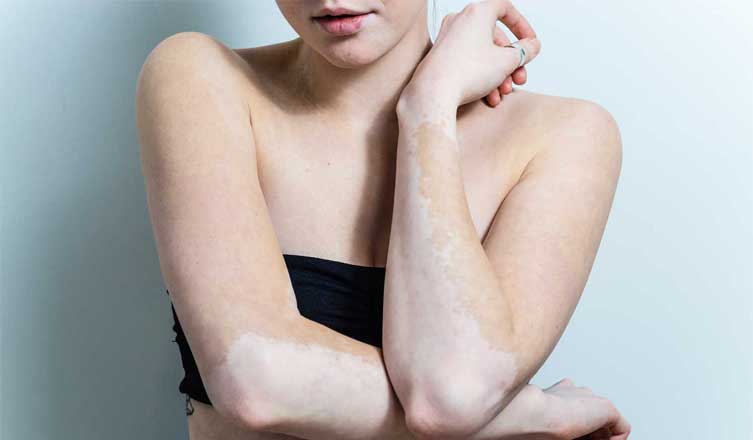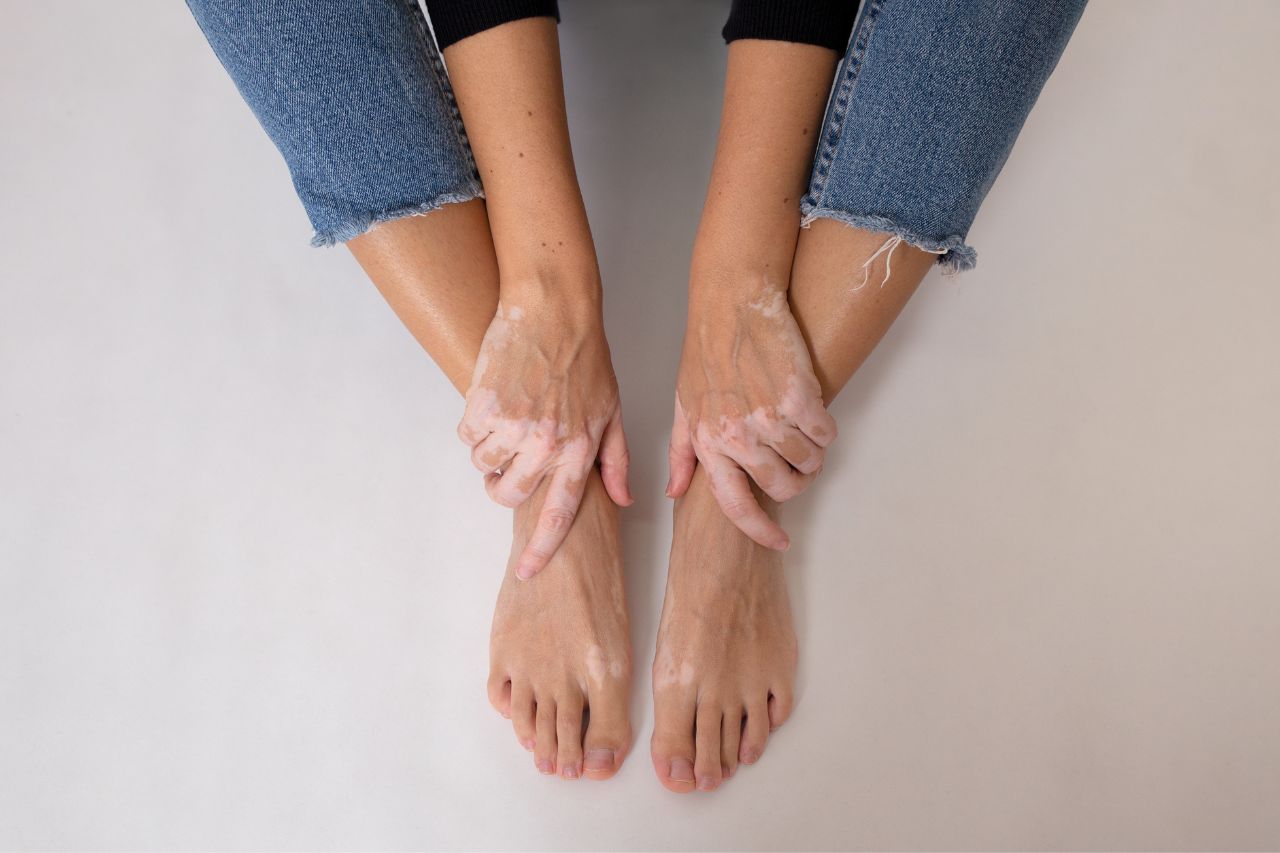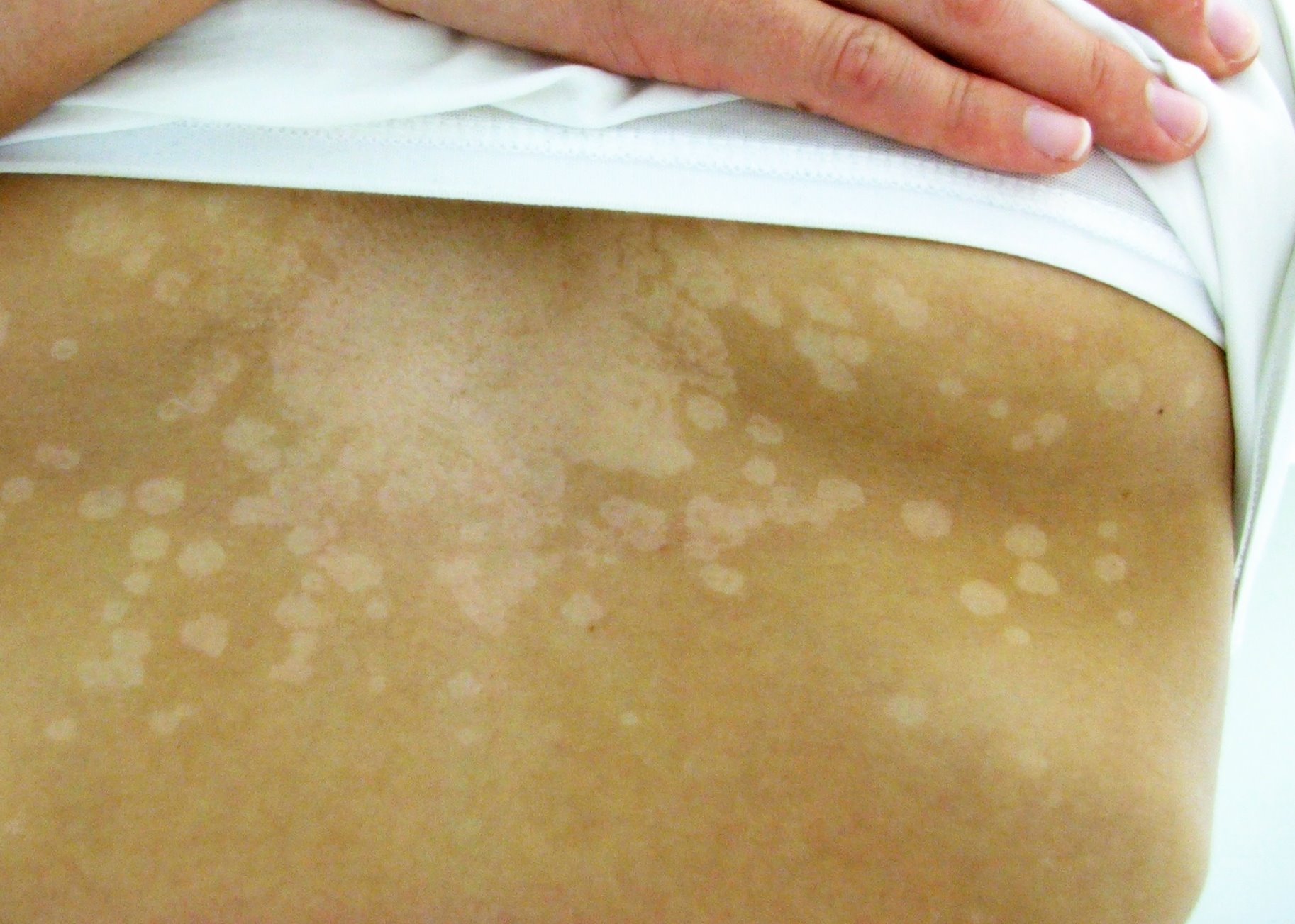Tinea Versicolor or Pityriasis Versicolor Skin is a fungal infection that tends to cause small, discolored patches on skin by interfering with its normal pigmentation is known as tinea versicolor.
Thank you for reading this post, don’t forget to subscribe!
This condition mostly affects teenagers and results in patches that are either lighter or darker than the surrounding skin.
Tinea versicolor, which is also called pityriasis versicolor, is not painful or contagious. But it can lead to emotional distress or self-consciousness. Antifungal creams, lotions or shampoos can help treat tinea versicolor.
But even after successful treatment, skin color may remain uneven for several weeks or months.
This condition often tends to recur depending upon the weather conditions and are more apparent due to sun exposure.
In most cases, Tinea Versicolor or Pityriasis Versicolor affects the trunk shoulders and back of the body and sometimes also cause mild itching.
What is Tinea Versicolor or Pityriasis Versicolor Skin?
A skin condition caused due to Malassezia Fungal infection that tends to result in the appearance of small, discolored patches in different parts of the body, this Malassezia fungus generally lives on the surface of our skin.
Causes
A yeast called Malassezia causes tinea versicolor; it normally lives on the skin of most adults without producing disease. It exists in two forms, a yeast form and a form that resembles “penne and meatballs” when viewed microscopically.
This second form makes patches of discolored slightly scaly skin called tinea versicolor. Medical professionals believe that a chemical produced by Malassezia, azelaic acid, is responsible for the loss of pigment. Most people with this condition are perfectly healthy.
Because the tinea versicolor or pityriasis versicolor fungus is part of the normal adult skin flora, this condition is not overtly contagious. It often recurs after treatment, but usually not immediately, so treatment may need to be repeated only every year or two.
Where a yeast called Malassezia is the reason behind this infectious condition, it is important to know that. Tinea versicolor is caused when there is an uncontrolled growth of this yeast all over the skin due to some of the following reasons-
- Oily skin.
- Hot or humid weather conditions.
- Weak immune system.
- Excessive sweating.
- Hormonal changes.
- A weakened immune system.
Symptoms 
- Patches that are white, pink, red, or brown and may be lighter or darker than the skin around them.
- Spots that don’t tan the way the rest of your skin does.
- Spots that show up more boldly when you do tan.
- Spots that may occur anywhere on your body but are most commonly seen on your neck, chest, back, and arms.
- Spots that are dry and scaly and may itch or hurt, although this is rare.
Diagnosis
Where symptoms are an alarming sign of a condition, one needs a proper diagnosis to get to the root of the problem. Here are some of the diagnosis techniques that your doctor might use to diagnose the condition of tinea versicolor-
- Skin Biopsy- A diagnosis treatment that requires a skin sample that is scraped from the affected area. This sample is then taken under a microscope for closer observation.
- Black Light Examination- A diagnosis process that uses ultraviolet lights that are reflected on the affected area. If the color of light turns fluorescent in color, then it is an indication of tinea versicolor.
- Potassium hydroxide microscopy- A very unique technique that includes dipping the removed skin cell into potassium hydroxide and observing it under a microscope.
Differentiation:
Some skin problems have symptoms that look like tinea versicolor or pityriasis versicolor for example:
Vitiligo: a disease that makes you lose your skin color
Pityriasis rosea: a rash that causes small spots that fan out on your body.
Allopathic Treatment for Tinea Versicolor or Pityriasis Versicolor
Many antifungal agents are available to apply to the skin to treat tinea versicolor or pityriasis versicolor.
Over the counter (OTC) remedies include:
- clotrimazole
- miconazole
- ciclopirox
Apply these twice a day for 10-14 days. Unfortunately, these come in small tubes and are hard to apply to large areas. Sprays of clotrimazole are available and can be a more practical treatment approach. Another OTC option is selenium sulfide shampoo 1% or 1% ketoconazole shampoo. Some doctors recommend applying these for 15 minutes twice a week for two to four weeks.
Many prescription-strength antifungal creams can treat tinea versicolor, as well as a stronger form of selenium sulfide (2.5%) and prescription-strength ketoconazole shampoo (2%). However, these pose the same application problems as their OTC counterparts.
Oral treatment for tinea versicolor has the advantage of simplicity. Two doses of fluconazole or itraconazole a week for four weeks can be pretty effective. Some common medications such as alprazolam and montelukast may interact with fluconazole, so your doctor will need to know what other drugs you take before treating tinea versicolor orally.
Terbinafine is not an effective treatment for this disease.
Homeopathic Treatment for Tinea Versicolor or Pityriasis Versicolor
Sulphur
Dry, scaly, unhealthy; every little injury suppurates. Freckles. Tinea versicolor or pityriasis versicolor. Itching, burning; worse scratching and washing. Pimply eruption, pustules, rhagades, hangnails. Excoriation, especially in folds. Feeling of a band around bones. Skin affections after local medication. Pruritus, especially from warmth, is evening, often recurs in springtime, in damp weather.
Zincum Metalicum 
Formication of feet and legs as from bugs crawling over the skin, preventing sleep. Eczema, especially in the anemic and neurotic. Itching of thighs and hollow of knees. Retrocession of eruptions. Tinea versicolor or pityriasis versicolor.
Sepia Officianalis
Herpes circinatus in isolated spots. Itching; not relieved by scratching; worse in bends of elbows and knees. Chloasma; herpetic eruption on lips, about mouth and nose. Tinea versicolor or pityriasis versicolor. Ringworm-like eruption every spring. Urticaria on going in open air; better in warm room. Hyperhidrosis and bromhidrosis. Sweat on feet, worse on toes, intolerable odor. Lentigo in young women. Ichthyosis with offensive odor of skin.
Mezereum for Tinea Versicolor or Pityriasis Versicolor Skin
Eczema; intolerable itching; chilliness with pruritus; worse in bed. Tinea versicolor or pityriasis versicolor. Ulcers itch and burn, surrounded by vesicles and shining, fiery-red areola. Zona, with burning pain. Bones, especially long bones, inflamed and swollen; caries, exostosis; pain worse night, touch, damp weather. Eruptions ulcerate and form thick scabs under purulent matter exudes (Chrysophanic acid).
Thuja Occidentalis
Polypi, tubercles, warts epithelioma, naevi, carbuncles; ulcers, especially in ano-genital region. Freckles and blotches. Perspiration sweetish, and strong. Dry skin, with brown spots. Zona; herpetic eruptions. Tinea versicolor or pityriasis versicolor. Glandular enlargement. Nails crippled; brittle and soft. Eruptions only on covered parts; worse after scratching. Very sensitive to touch. Coldness of one side. Sarcoma; polypi. Brown spots on hands and arms.
Mercuris Solubus
Almost constantly moist. Persistent dryness of the skin contra indicates mercurius. Excessive odorous viscid perspiration; worse, night. General tendency to free perspiration, but patient is not relieved thereby. Vesicular and pustular eruptions. Tinea versicolor or pityriasis versicolor. Ulcers, irregular in shape, edges undefined. Pimples around the main eruption. Itching, worse from warmth of bed. Crusta lactea; yellowish-brown crusts, considerable suppuration. Glands swell every time patient takes cold. Buboes. Orchitis.
Clematis Erecta
Red, burning, vesicular, scaly, scabby. Itches terribly; worse, washing in cold water; worse face and hands and scalp around occiput. Glands hot, painful, swollen; worse inguinal glands. Glandular indurations and tumors of breast. Varicose ulcers. Tinea versicolor or pityriasis versicolor.
Tellurium Metallicum
Itching of hands and feet. Herpetic spots; ringworm. Ring-shaped lesions, offensive odors from affected parts. Barber’s itch. Stinging in skin. Fetid exhalations. Offensive foot-sweat. Eczema, back of ears and occiput. Circular patches of eczema. Tinea versicolor or pityriasis versicolor.
Thyroidinum
Psoriasis associated with adiposity (not in developing stage). Skin dry, impoverished. Cold hands and feet. Eczema. Uterine fibroids. Browne swelling. Swelling of glands of stony hardness. Sluggish cases. Jaundice with pruritus. Ichthyosis, lupus. Itching without eruption, worse night.
Kalium Sulphuricum
Psoriasis. Eczema; burning, itching, papular eruption. Nettle-rash. Polypi. Epithelioma. Seborrhoea. Favus. Ringworm of scalp or beard with abundant scales.
Hamamelis Virginiana
Bluish chilblains. Phlebitis. Purpura. Varicose veins and ulcers; very sore. Burns. Ecchymosis. Traumatic inflammations.
Calceria Carbonicum
Unhealthy; readily ulcerating; flaccid. Small wounds do not heal readily. Glands swollen. Nettle rash; better in cold air. Warts on face and hands. Petechial eruptions. Chilblains. Boils.
Arsenicum Album 
Itching, burning, swellings; oedema, eruption, papular, dry, rough, scaly; worse cold and scratching. Malignant pustules. Ulcers with offensive discharge. Anthrax. Poisoned wounds. Urticaria, with burning and restlessness. Psoriasis. Scirrhus. Icy coldness of body. Epithelioma of the skin. Gangrenous inflammations.
Medorrhinum
Yellow. Intense and incessant itching; worse night and when thinking of it. Fiery red rash about anus in babies. Copper-colored spots. Favus. Tumors and abnormal growth.
Psorinum
Dirty, dingy look. Dry, lusterless, rough hair. Intolerable itching. Herpetic eruptions, especially on scalp and bends of joints with itching; worse, from warmth of bed. Enlarged glands. Sebaceous glands secrete excessively, oily skin. Indolent ulcers, slow to heal. Eczema behind ears. Crusty eruptions all over. Urticaria after every exertion. Pustules near fingernails.
Psorinum has shown the best results where itching is intolerable, and the skin gets raw or may even start to bleed from intense and continuous scratching.
P. S: This article is only for doctors having good knowledge about Homeopathy and allopathy, for learning purpose(s).
For proper consultation and treatment, please visit our clinic.
None of above-mentioned medicine(s) is/are the full/complete treatment, but just hints for treatment; every patient has his/her own constitutional medicine.
To order medicine by courier, please send your details at WhatsApp– +923119884588
 Dr. Sayyad Qaisar Ahmed (MD {Ukraine}, DHMS), Abdominal Surgeries, Oncological surgeries, Gastroenterologist, Specialist Homeopathic Medicines.
Dr. Sayyad Qaisar Ahmed (MD {Ukraine}, DHMS), Abdominal Surgeries, Oncological surgeries, Gastroenterologist, Specialist Homeopathic Medicines.
Senior research officer at Dnepropetrovsk state medical academy Ukraine.
Location: Al-Haytham clinic, Umer Farooq Chowk Risalpur Sadder (0923631023, 03119884588), K.P.K, Pakistan.
Find more about Dr Sayed Qaisar Ahmed at:
https://www.youtube.com/Dr Qaisar Ahmed
https://www.facebook.com/dr.qaisar.dixecosmetics
